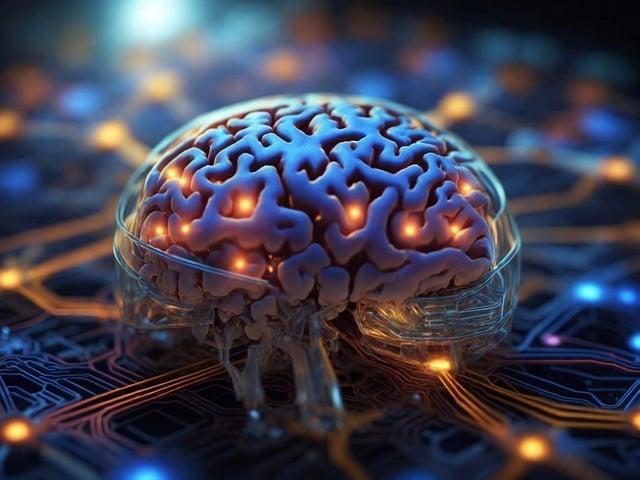


In large and small communities across America, a quiet unease is setting in.
It’s not just the usual seasonal chill or the Halloween decorations going up on front lawns. It’s the growing fear that artificial intelligence, now advancing faster than almost anyone imagined, is about to reorder economic life from top to bottom.
For many hardworking families, and cynical singles, this is less a futuristic abstraction than a looming threat to their livelihoods.
Under Donald Trump’s aggressive innovation agenda, the rapid deployment of generative AI is reshaping industries at breathtaking speed. The administration’s goal is clear: out-compete China by making America the global leader in AI technology. But while tech executives and policymakers see opportunity, millions of entry-level workers see their jobs on the line.
Young Americans, already squeezed by stagnant wages and soaring costs of living, are sounding the alarm about AI creeping into white-collar fields as well. Accountants, paralegals, junior analysts, and customer service representatives were all once seen as stepping stones to the middle class. Now, they are at risk. If these jobs vanish or are permanently downgraded to lower pay, the promise of upward mobility fades with them.
The fear isn’t just technological; it’s deeply personal. It strikes at the heart of the American Dream.
The economic context makes this anxiety sharper. Inflation has chewed through family budgets, forcing many to dip into savings simply to stay afloat. Meanwhile, as AI tools spread across service industries, talk of “permanent job loss” no longer sounds alarmist. AI advocates remain publicly optimistic, arguing that new technologies will ultimately create more jobs than they destroy. But for those watching their livelihoods teeter on the edge, these reassurances ring hollow.
They want tangible safeguards, not distant promises.
The economic anxiety is widespread. Polling shows Americans fear a cascade of job cuts across multiple sectors, deepening debt and imbuing hopelessness. These fears intersect with populist calls for bold reforms that defend the working and middle classes against what increasingly looks like a cold, automated future.
America’s real issue isn’t whether AI will gain steam. It’s whether anyone will fight for ordinary citizens as unparalleled technology advances.
Amid this debate, it’s worth looking back to a film that, strangely enough, anticipated much of this atmosphere generations before ChatGPT or self-driving cars. Released in 1982, Halloween III: Season of the Witch was dismissed at the time as a bizarre detour from its slasher roots. But with hindsight, it stands out as a cultural artifact perched on the fault line between the analog past and the digital future.
The movie’s plot is absurd on the surface: a mask-making company run by an ancient sorcerer embeds microchips into Halloween masks, then uses a television broadcast to activate a deadly ritual. Yet beneath the camp lies a strikingly modern fear. It’s the story of an invisible, technologically coordinated system weaponized against ordinary people, who embrace it without realizing the danger.
The technology isn’t sentient. It’s a centralized mechanism that executes its program without conscience. That is exactly what many fear today: not a rogue AI with human motives, but a sprawling, automated network making decisions that reshape lives without accountability.
The film’s corporate villain, Silver Shamrock Novelties, masquerades as a friendly, family-oriented brand. Behind the marketing lies a lethal agenda. The parallel to today’s technology giants is uncanny. In both cases, massive corporations harness emerging technologies to exercise control over society, all while projecting a cheerful, harmless image.
CEO Conal Cochran uses an analog television broadcast to deliver a murderous, primitive form of AI, literally destroying people’s minds. This theatrically mirrors today’s algorithmic recommendation engines, drawing people in through familiar channels before tightening their grip.
Cochran’s android henchmen are almost human, but disturbingly off. They anticipate modern anxieties about deepfakes, synthetic media, and AI-generated influencers. They embody that uneasy sensation when technology tries to mimic humanity and doesn’t quite succeed, triggering distrust and fear. And the film’s bleak ending, with the hero screaming into the phone to stop a broadcast he can’t fully control, resonates powerfully today.
It evokes the feeling that the technological system has grown too vast and interconnected to be shut down by any single act.
Halloween III captured the twilight moment between two eras. It reflected a society beginning to grapple with tech-driven corporate power, media saturation, and the creeping sense that technology could become both omnipresent and ungovernable. Four decades later, those themes have moved from fiction to fact.
The lesson is simple. Technology carries extraordinary potential, but left unchecked, it can corrode economic security and human dignity. Americans sense this instinctively. They don’t reject innovation; they reject being left behind. As the AI revolution accelerates, the choice is not between progress and stagnation.
It’s between a future where technology serves the people and one where people serve the technology.
Dr. Joseph Ford Cotto is the creator, host, and producer of News Sight, delivering sharp insights on the news that shapes everyday life. He also provides affordable, results-driven consulting for business, management, media, politics, and the economy. During the 2024 presidential race, he developed the Five-Point Forecast, which accurately predicted Donald Trump’s national victory and correctly called every swing state. Cotto holds a doctorate in business administration and is a Lean Six Sigma Certified Black Belt.

Image: Free image, Pixabay license.
